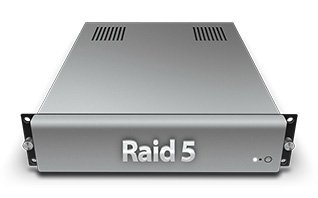Professional RAID 1 Data Recovery Services:
Introduction to RAID 1 Data Recovery
RAID 1 is popular for its redundancy, mirroring data across multiple drives to ensure fault tolerance. When data loss occurs due to simultaneous drive failure or controller issues, our RAID 1 recovery services use specialised tools to reconstruct mirrored data, ensuring maximum recovery success.
How RAID 1 Works
RAID 1 duplicates data across two or more drives. Unlike RAID 0, RAID 1 offers redundancy, meaning that if one drive fails, data can still be accessed from the remaining drive. However, when both drives fail or the RAID controller is corrupted, recovery requires professional expertise to reconstruct the data accurately.
Common RAID 1 Failure Scenarios
- Drive Failure: While RAID 1 can withstand single drive failure, simultaneous failure of both drives results in data loss.
- Controller Failure: A faulty RAID controller can make the entire array inaccessible.
- File System Corruption: Corrupted file systems prevent the RAID from mounting, making data retrieval difficult.
- Multiple Drive Failures: In cases of simultaneous failure, professional recovery is necessary to access the mirrored data.
Understanding these failure types is key to selecting the correct recovery approach and ensuring data integrity.
Types of RAID 1 Data Recovery Services
Logical Data Recovery
Logical recovery focuses on data lost due to software issues, file system corruption, or accidental deletion. This process requires data repair without accessing or modifying physical components.
Physical Data Recovery
When RAID 1 drives suffer physical damage, our Forensic Raid Professionals repair or replace components in a cleanroom. Afterward, drives are imaged for data extraction, allowing for safe and effective recovery.
Firmware and Controller Repair
Firmware issues can make drives inaccessible, while controller failures disrupt RAID functionality. In these cases, recovery experts reprogram firmware or replace the RAID controller to access the data.
The RAID 1 Data Recovery Process
- Initial Assessment and Diagnostics: RAID 1 arrays are assessed to determine the extent of the failure, including drive health and RAID configuration.
- Drive Imaging and Cloning: Each drive is cloned to create a backup before data recovery, preserving the original data for safe extraction.
- Data Reconstruction and Verification: The RAID 1 configuration is reassembled, and data is verified to ensure accuracy.
Logical Data Recovery for RAID 1 Arrays
Logical recovery techniques focus on data loss due to non-physical issues, such as:
- File System Repair: Corrupted file systems are rebuilt to restore data access.
- Software Recovery for Deleted or Corrupted Data: Software tools can restore deleted files if they haven’t been overwritten, addressing logical damage within the RAID array.
Physical Data Recovery for RAID 1 Disks
In cases of physical damage, Forensic Raid Professionals use specialised environments and techniques:
- Repairing Mechanical Failures: If drives are damaged, our Forensic Raid Professionals replace damaged components like the read/write head or PCB.
RAID 1 Controller and Firmware Issues
RAID 1 recovery services address issues related to RAID controllers and firmware:
- Replacing or Repairing RAID Controllers: Failed RAID controllers can disrupt RAID functionality. Professionals repair or replace the controller to regain access to data.
- Firmware Reprogramming: In cases of firmware corruption, specialists reprogram firmware to allow drive access, ensuring accurate data restoration.
Specialized Tools for RAID 1 Recovery
RAID 1 recovery services use specialised tools, including:
- RAID Reassembly Tools: These tools help replicate the original RAID configuration, essential for reconstructing mirrored data accurately.
- Data Imaging Software: Imaging software creates sector-by-sector copies of drives, preserving original data for safe recovery.
- Forensic Analysis Tools: Used to analyse drive integrity and ensure accurate data recovery, especially in complex scenarios.
Benefits of Professional RAID 1 Data Recovery
Professional RAID 1 data recovery offers multiple benefits:
- High Success Rates: With specialised tools and expertise, our recovery professionals have high success rates for RAID 1.
- Reduced Downtime: Our Forensic Raid Professionals work efficiently to minimise data recovery times, ensuring businesses resume normal operations quickly.





